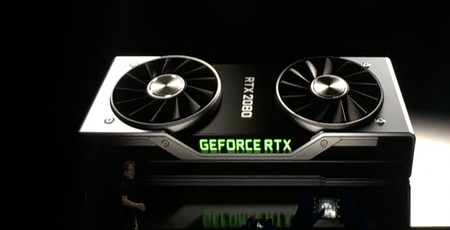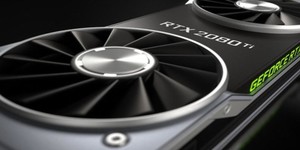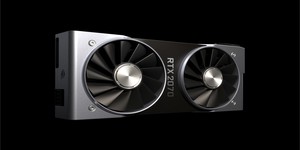
Nvidia CEO and founder Jensen Huang has kickstarted Gamescom 2018 with a pre-show event wherein he confirmed the existence of the long-rumoured GeForce RTX 2000 series, based on the same new Turing architecture as found in the recently announced Quadro RTX workstation cards, and coming with built-in real-time ray tracing support.
Almost 10 years in the making, Turing is the most advanced GPU Nvidia has ever produced, and one that the company describes as the 'greatest leap since CUDA', which launched in 2006. It's an 18.9-billion transistor GPU. Have no doubt, this is a major architectural overhaul for Nvidia; the Turing Streaming Multiprocessor (SM) has a brand new design with the ability to perform independent floating point and integer operations. It offers up to 14 TFLOPS or up to 14 TIPS of performance depending on the operation.
The GPU also includes a dedicated RT Core for ray tracing operations, with Nvidia promising a ray tracing capability of 10 gigarays per second; for comparison, a GTX 1080 Ti can manage about 1.21 Giga Rays per second according to Nvidia's calculations. The Turing core also has a dedicated AI processor, the Tensor Core, which offers up to 110 half-precision (FP16) TFLOPS of power with the ability to offer more by lowering or mixing the precision of the calculations. Nvidia has also combined the various performance metrics of Turing to come up with a new performance metric to reflect the shift in processing methods here, arriving at a figure of 78T RTX-OPS (tera ray tracing operations per second). This is a somewhat meaningless figure until we can delve into it, but there it is.
Three news cards using the Turing GPU have been confirmed along with a selection of performance numbers, starting prices, and availability. At the top, the RTX 2080 Ti offers the full 10 Giga Rays per second, 78T RTX-OPS, and an 11GB frame buffer and will start at $999 excluding tax. The RTX 2080 drops performance to 8 Giga Rays per second, 60T RTX-OPS, and a 8GB frame buffer, and it will start at $699 excluding tax. Finally, the RTX 2070 hits 6 Giga Rays per second, 45T RTX-OPS, and a 8GB frame buffer, and it will hit shelves for $499 excluding tax. The cards have just opened for pre-order and will hit shelves in one month on September 20th. This is also when we expect reviews and further details to go live, but we haven't had this confirmed as of yet. For reference, the RTX 2070 is said to outperform a Titan Xp, although precisely how this is measured wasn't made clear and should absolutely be treated with caution given the metric fiddling going on.
Interestingly, the new stock card moves to a dual-fan design. Power regulation and thermal management are naturally said to be top notch, and we know that DisplayPort 1.4a is supported.
Long considered the holy grail of real-time computer graphics, ray tracing effectively traces beams of light from their various sources and tracks how they all interact with the objects in a 3D environment based on certain material characteristics, with the result being a highly realistic scene with accurate shadows, reflections, and ambient occlusion. In the pursuit of real-time ray tracing, Nvidia and Microsoft made headlines in March this year with the announcement of the DirectX Raytracing (DXR) API and supporting SDKs, at which point Nvidia revealed a real-time rendered demonstration involving Storm Troopers. However, it has now revealed that, at the time, a $68,000 PC comprising four Nvidia Tesla V100s was required just to render it at 20-something frames per second. Today with a single Turing GPU, Nvidia says the same demo can be rendered even faster: 45ms on average compared to 55ms before (Pascal would be 308ms).
Demos are one thing, but how will Turing and real-time ray tracing be beneficial to games? To answer this, Nvidia wheeled out a series of developers to showcase the new technology. Included in the reel were Shadow of the Tomb Raider with real-time ray-traced shadows and Metro Exodus with global illumination. Also confirmed as supporting RTX were Assetto Corsa Competizione, Atomic Heart, and Battlefield V (unsurprising after today's earlier news). We have to admit, the demonstrations were really rather awesome and a clear step up in video game lighting.
We will delve further into the architecture once we actually learn about it and have had a chance to test it out, but for now it's time to start getting exciting about new performance benchmarks.

MSI MPG Velox 100R Chassis Review
October 14 2021 | 15:04








Want to comment? Please log in.